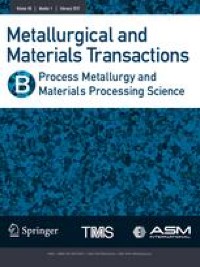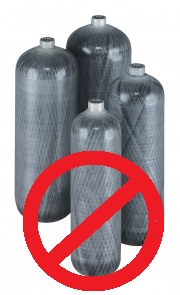richerso
Contributor
Hi folks! Richerso here from Texas. Listen carefully. I have a very specific request if anyone can help me.
But first a little background:
I am not looking to reopen the debate about the "bad" alloy aluminum cylinders. Other threads cover that debate just fine. However, I do want to do my own little research project. For what it is worth, I have read/heard the references to "Sustained Load Cracking" (SLC).
Here is my angle though. After researching the topic a bit, after perusing the PHMSA.gov web site, and after applying my own knowledge in metallurgy, here is what i think (not looking for a debate here). If you would like to debate, there are other threads on this forum that are happy to debate the virtues/deficiencies of that "bad" aluminum.
I have seen some pictures of some ruptured cylinders. The ruptured cylinders appear to be a classic brittle failure mode. Brittle failure indicates an improper heat treatment of the material. No need to invoke SLC. Besides, a search of the American Society of Materials database, formerly American Society of Metals, and a search of the American Society of Mechanical Engineers database, the authority for pressure vessel design practices, I cannot find any reference in the literature to any phenomenon called Sustained Load Cracking. I don't think SLC exists. I do however believe that maybe, just maybe there is a lot or two or three of 6351 cylinders out there that received a bad heat treatment, and thus are susceptible to brittle fractures.
What do I want?
If anyone has a SP6498, or AA-6351 aluminum cylinder, a cylinder with a VERIFIED crack in the neck threads or bona fide ruptured tank, I want a 2in x 2in x 2in material sample excised from that tank. I want to conduct an X-ray fluorescence alloy analysis; and I want to perform a metallographic grain survey on the failed tank. I want to know. Did those tanks receive a bad heat treatment? If you can help me obtain a material sample of a FAILED bad aluminum tank, private message me.
But first a little background:
I am not looking to reopen the debate about the "bad" alloy aluminum cylinders. Other threads cover that debate just fine. However, I do want to do my own little research project. For what it is worth, I have read/heard the references to "Sustained Load Cracking" (SLC).
Here is my angle though. After researching the topic a bit, after perusing the PHMSA.gov web site, and after applying my own knowledge in metallurgy, here is what i think (not looking for a debate here). If you would like to debate, there are other threads on this forum that are happy to debate the virtues/deficiencies of that "bad" aluminum.
I have seen some pictures of some ruptured cylinders. The ruptured cylinders appear to be a classic brittle failure mode. Brittle failure indicates an improper heat treatment of the material. No need to invoke SLC. Besides, a search of the American Society of Materials database, formerly American Society of Metals, and a search of the American Society of Mechanical Engineers database, the authority for pressure vessel design practices, I cannot find any reference in the literature to any phenomenon called Sustained Load Cracking. I don't think SLC exists. I do however believe that maybe, just maybe there is a lot or two or three of 6351 cylinders out there that received a bad heat treatment, and thus are susceptible to brittle fractures.
What do I want?
If anyone has a SP6498, or AA-6351 aluminum cylinder, a cylinder with a VERIFIED crack in the neck threads or bona fide ruptured tank, I want a 2in x 2in x 2in material sample excised from that tank. I want to conduct an X-ray fluorescence alloy analysis; and I want to perform a metallographic grain survey on the failed tank. I want to know. Did those tanks receive a bad heat treatment? If you can help me obtain a material sample of a FAILED bad aluminum tank, private message me.











